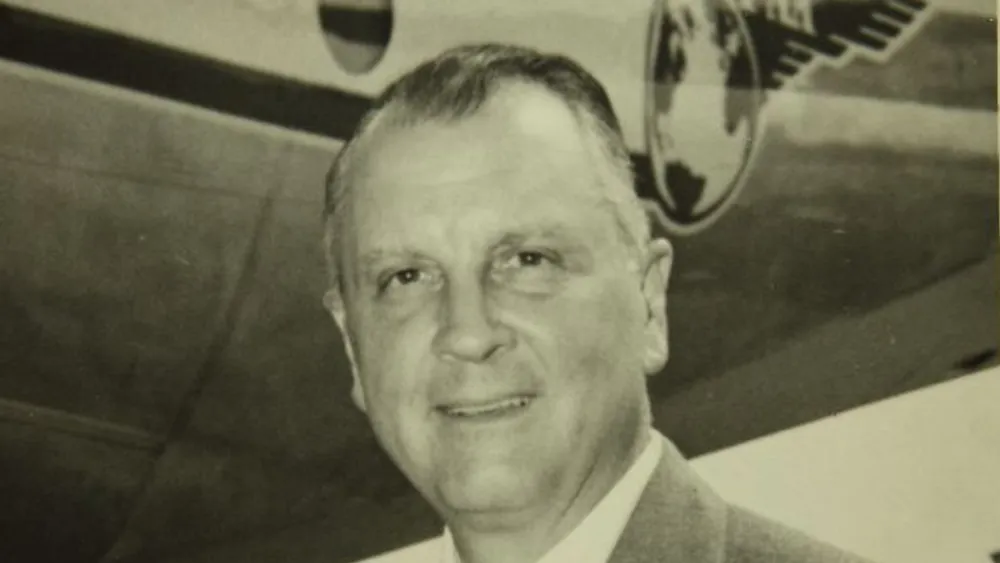Juan Trippe made a lasting impact on the world of aviation. As an American commercial aviation pioneer and entrepreneur, Trippe founded Pan American World Airways, an iconic airline that shaped the 20th-century aviation landscape.
Early Life and Education of Juan Trippe
Juan Terry Trippe’s life story commences in the quaint town of Sea Bright, New Jersey, where he was born on June 27, 1899. Despite his name leading to assumptions about Hispanic heritage, Trippe’s family roots were firmly planted in Northern European ancestry. They showcased the complexity of cultural backgrounds.
As a young man, Trippe navigated through his early education at the Bovea School, culminating his high school years with graduating from The Hill School in 1917. Eager to further his academic journey, he set his sights on Yale University. However, the outbreak of World War I disrupted the conventional course of his studies, leading him to an unexpected yet enriching experience where military history lessons became a significant part of his life.
Juan Trippe: Wartime Flight Training
In response to the wartime call, Trippe’s trajectory took an unexpected turn as he sought flight training with the United States Navy. The allure of aviation captivated him, leading to his designation as a Naval aviator. The war’s conclusion marked a pivotal moment as Trippe was at a crossroads.
Rather than continuing a dedicated pursuit of a military aviation career, Trippe returned to Yale, graduating in 1921. This academic accomplishment signified the completion of formal education and served as a touchstone for what lay ahead.
The interwar period laid the groundwork for Trippe’s passion for aviation. The challenges and experiences of wartime flight training made a lasting impression on his psyche. Therefore, it instilled a deep commitment to the skies. This dedication would become the driving force behind his later achievements in the aviation industry.
Juan Trippe: Entrepreneurship Takes Flight
After completing his studies, Trippe entered the realm of finance on Wall Street. However, it wasn’t long before his heart found its true passion in aviation. In 1922, Trippe embarked on a bold venture, rallying support from his Yale classmates to create Long Island Airways.
Juan Trippe: Innovations in Global Air Travel
As Trippe’s aviation ambitions soared, he furthered his involvement by investing in Colonial Air Transport. Little did he know that this would be a pivotal step toward creating an aviation giant. Colonial Air Transport evolved into what we now know as Pan American Airways. This is an airline that would become synonymous with international travel.
The turning point came in 1927 when Pan Am’s inaugural flight. Then, it took off from Key West and landed in Havana. Furthermore, it marked the initiation of Trippe’s groundbreaking contributions to the aviation industry. Moreover, this historic journey was just the beginning of a trailblazing career that would see Trippe at the forefront of innovations. So, it shaped the landscape of global air travel.
Pan Am’s Global Expansion
Guided by Trippe’s visionary leadership, Pan American Airways, commonly known as Pan Am, took on an era of unprecedented global expansion. Moreover, it accomplished numerous significant milestones. One of the standout achievements occurred in the 1930s when Pan Am etched its name as the first airline to successfully cross the vast expanse of the Pacific Ocean. This happened through the legendary China Clipper. Moreover, this remarkable feat marked a technological triumph. Then, it opened up new frontiers for international air travel, establishing Pan Am as a pioneering force.
Tourist Class and the Democratization of Air Travel
Trippe’s innovative mindset further manifests in his commitment to democratize air travel. In a transformative move, he introduced the concept of tourist class, a revolutionary step that made flying more accessible to a broader audience. This strategic initiative not only revolutionized the airline industry by offering more affordable options. Moreover, it also played a pivotal role in shaping the future of global tourism.
However, Trippe’s visionary reach extended beyond the skies. He recognized the interconnectedness of travel and hospitality and founded InterContinental Hotels & Resorts, seamlessly integrating Pan Am’s services into the broader spectrum of travel experiences. This diversification showcased Trippe’s holistic approach to the travel industry, envisioning a seamless journey for passengers from air travel to accommodation.
Juan Trippe: Jet Age Initiatives
Trippe’s foresight extended into the jet age, where he played a crucial role in introducing jet aircraft to Pan Am’s fleet. In 1958, Pan Am’s first scheduled jet flight, operated by the Boeing 707 Clipper America, revolutionized air travel with reduced flight times and lower fares. However, Trippe’s most significant contribution came in 1965 when he convinced Boeing to produce the iconic Boeing 747, forever changing the landscape of international air travel.
Personal and Professional Achievements
Juan Trippe’s interests extended far beyond the aviation world, revealing a multifaceted individual passionate about various pursuits. His membership in exclusive clubs, including The Royal and Ancient Golf Club of St Andrews, hinted at a love for recreational and social activities beyond the intense business of running an airline empire.
In 1928, Trippe’s personal life took center stage when he married Elizabeth Stettinius, creating connections to the political sphere through her brother, U.S. Secretary of State Edward R. Stettinius Jr.
Despite stepping down from the helm of Pan Am in 1968, Trippe’s commitment endured. It is demonstrated by his continued involvement on the board of directors. This demonstrated his business acumen and a genuine dedication to the company’s success and legacy.

Juan Trippe: Legacy and Recognition
Juan Trippe’s legacy extends far beyond his lifetime. His stroke in 1980 marked a slowdown in his activities, and he passed away on April 3, 1981, at the age of 81.
His contributions were posthumously recognized with the Medal of Freedom by President Ronald Reagan in 1985.
Inducted into the National Aviation Hall of Fame in 1970 and the International Air & Space Hall of Fame in 1982, Trippe’s impact on aviation remains unparalleled.
Insights from Juan Trippe
Juan Trippe’s life imparts enduring lessons. His resilience in challenging times, emphasis on diversity, and passion-fueled innovation are pillars of inspiration. Trippe’s entrepreneurial spirit, global commitment, and foresight offer invaluable guidance. Beyond titles, he champions a multifaceted approach. So, it led to success and underscored the importance of recognizing pioneers for their lasting impact.











